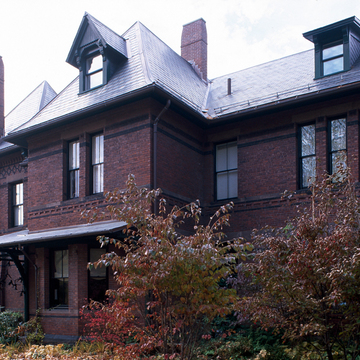Paralleling Brattle Street, Highland Street (and the nearby areas on Appleton and Sparks streets) provides especially fine examples of late-nineteenth- and early-twentieth-century domestic architecture. Moving from west to east, 54 Highland (1886, Chamberlin and Whidden) contributed to the emerging Colonial Revival experiment of nearby houses. Here a hipped-roof brick mass is organized symmetrically but enlivened by the Palladian stair window to the left and vertical oval window to the right of the distyle-in-antis projecting Ionic porch. Next door at number 48, Allen Jackson, architect for many early-twentieth-century Cambridge houses, designed a robust English half-timbered pile organized on a Y-shaped plan. At the corner of
You are here
Highland Street
1876–early twentieth century. Highland, Appleton, and Sparks sts.
If SAH Archipedia has been useful to you, please consider supporting it.
SAH Archipedia tells the story of the United States through its buildings, landscapes, and cities. This freely available resource empowers the public with authoritative knowledge that deepens their understanding and appreciation of the built environment. But the Society of Architectural Historians, which created SAH Archipedia with University of Virginia Press, needs your support to maintain the high-caliber research, writing, photography, cartography, editing, design, and programming that make SAH Archipedia a trusted online resource available to all who value the history of place, heritage tourism, and learning.


